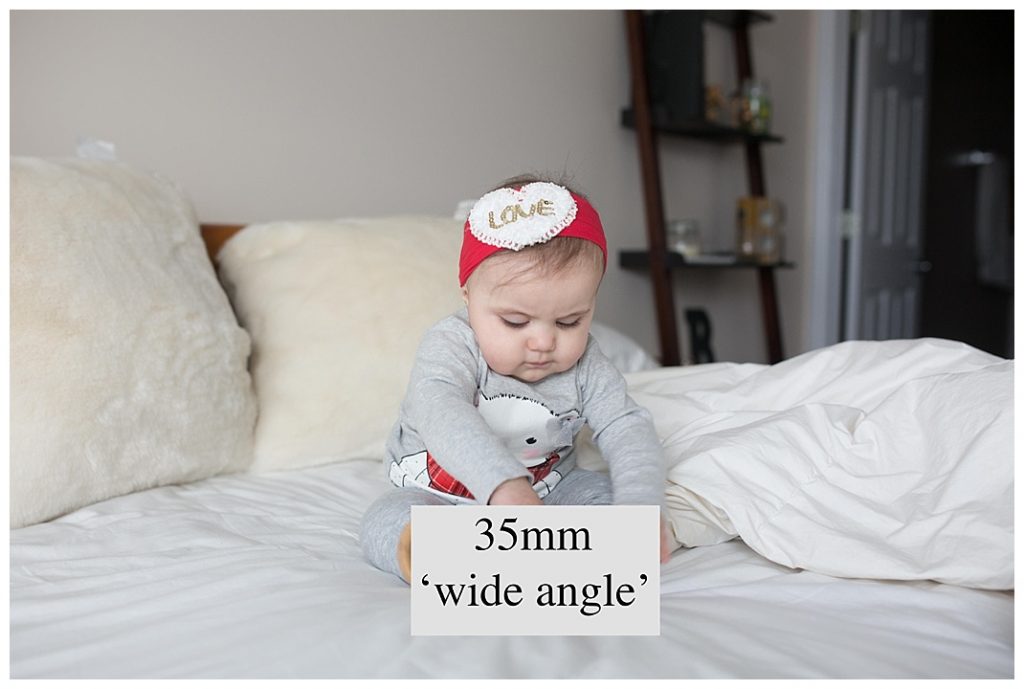Let’s Talk Lenses | A Club Click Course
if you ask me, a camera is only as great as the lens that’s on it. however, telling a good lens from a poor lens can be difficult to do. therefore, we’re going to take a look at the numbers on your lens that’ll help you identify whether you’re in love with your lens or in the market to purchase a new one. We’ll be identifying three bits of information over the course of two weeks just to be sure you can absorb all of the information!
the first, and arguably most important number on your lens is the focal length. the focal length is measured in millimeters. some lenses will only have one focal length (i.e. 35mm). these are referred to as ‘prime’ or ‘fixed’ lenses meaning that they do not zoom in or out. other lenses will list a focal length range like 18mm-55mm, 70mm-200mm, or 24mm-70mm, to name a few. the range in focal length means that the lens can zoom into the highest listed number and zoom out to the lowest listed number.
it is important here to also quickly familiarize yourself with your camera’s sensor size. for example, i shoot with a canon camera with a full frame sensor. therefore, when i attach a 50mm lens, i am receiving a true 50mm focal length. the first camera i purchased was a canon with a cropped sensor. this meant that when i attached a 50mm lens, i was receiving a true 80mm focal length. i calculated this by using canon’s multiplier which is taking the lens’s focal length and multiplying it by 1.6 (for nikon cameras, take the lens’s focal length and multiply by 1.5). a quick google search of your camera’s make and model number will tell you whether you are shooting on a cropped or full frame sensor. if you have more questions about any of this, please don’t hesitate to shoot me an email. i know it can be confusing and overwhelming–i’m writing it here as briefly as i can for y’all but am happier to dive in further for those that have more questions.
WHEW-now that THAT’S out of the way, we can get back to the focal lengths themselves. for the sake of simplicity, we are going to narrow focal lengths down into four categories: fisheye, wide, normal, and telephoto. the moral of the story here is that the smaller the number, the wider the lens. the wider the lens, the more you can squeeze into the photo. take a look at these photos below taken with lenses that fit in our four categories. for these images i stood in the exact same place and simply swapped out my lenses to achieve the different focal lengths.
at 16mm, the shot is VERY wide and distorted, giving it a ‘fish eye’ feel. having a fisheye lens like this can be helpful for landscape or architectural photos, but it’s not particularly flattering for portraits.
at 35mm, the shot is still wide, but the distortion is largely gone. a 35mm lens is considered a ‘wide angle’ lens because of its ability to encompass a subject and its surroundings without being very far from the subject. this makes it a very popular focal length for ‘lifestyle’ type photos because it is wide enough to capture a subject and their surroundings while keeping the image visually appealing by not distorting it. this is my personal favorite focal length. 99% of the photos i post are taken with my 35mm lens.
at 50mm, there is no distortion and the image has a more intimate appeal than the wider 35mm lens. 50mm lenses are nicknamed the ‘nifty fifty’ because they are supposed to be the lens that most naturally reflects our vision. this lens would be considered a ‘normal’ focal length. i shoot with my 50mm lens when i am looking to shoot close up detail shots or something more intimate than what my 35mm can capture.
at 135mm, the image is obviously very intimate. this is considered a telephoto lens and is great for capturing portraits from a distance. a lot of photographers enjoy having telephoto lenses in their bags to help capture intimacy without being close to their subject. i use a 135mm lens when i’m photographing wedding ceremonies. with the telephoto lens i can stand at the very back of the church and still capture close up photos of the bride and groom. this is not a lens i would suggest trying to use in-home but is perfect for situations where you will be far from your subject.
of course, there are TONS of different focal lengths-the ones in the photos posted above are just the tip of the iceberg- and a lens that i might fancy a favorite you might vehemently dislike but that’s the beauty of art! with this information in mind, though, take a look at your lens’s focal length and see what category it falls into. this will be your first step in understanding your lens’s capabilities. no matter what your focal length, spend some time this week experimenting with your lens. how close can you get to your subject before your lens no longer auto focuses? enjoy experimenting and don’t forget to post your images to your social media using the hashtag #ClubClickPic! i can’t wait to see your images!





